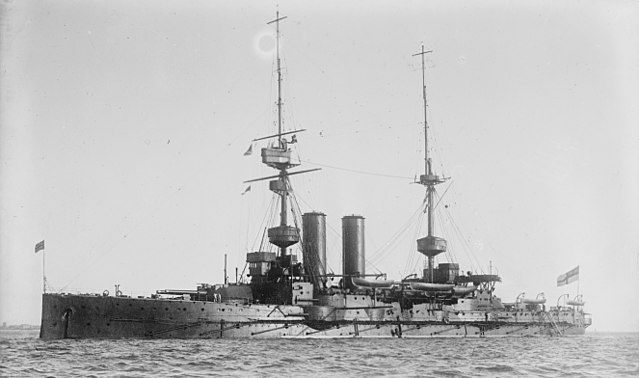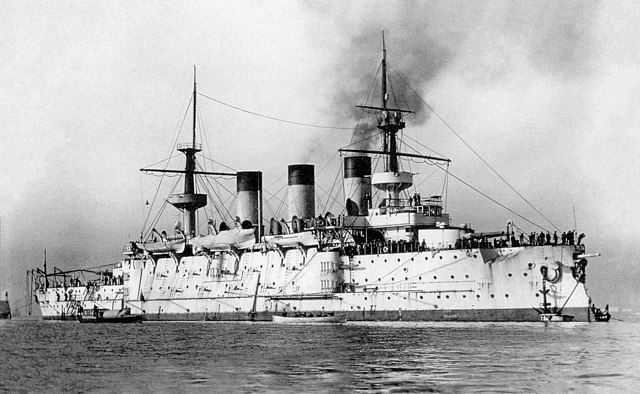HMS Exmouth was a Duncan-class pre-dreadnought battleship of the Royal Navy. Built to counter a group of fast Russian battleships, Exmouth and her sister ships were capable of steaming at 19 knots, making them the fastest battleships in the world. The Duncan-class battleships were armed with a main battery of four 12-inch (305 mm) guns and they were broadly similar to the London-class battleships, though of a slightly reduced displacement and thinner armour layout. As such, they reflected a development of the lighter second-class ships of the Canopus-class battleship. Exmouth was laid down by Laird Brothers at Birkenhead in August 1899, launched in August 1901, and completed in May 1903.
Exmouth during WWI
Right elevation and deck plan as depicted in Brassey's Naval Annual 1915
Exmouth in Canada in 1908 for the Quebec Tercentenary in 1908
The Duncan class was a class of six pre-dreadnought battleships built for the Royal Navy in the early 1900s. The six ships—HMS Duncan, HMS Albemarle, HMS Cornwallis, HMS Exmouth, HMS Montagu, and HMS Russell—were ordered in response to Russian naval building, specifically the fast second-class battleships of the Peresvet class, which they were specifically to counter. The foremost design consideration was a high top speed to match the rumoured top speed of 19 knots of the Russian ships while maintaining the same battery of 12-inch (300 mm) guns and keeping displacement from growing. This forced significant compromises in armour protection, though the ships adopted a revised system of protection for the bow, which was copied in other designs like the London class.
HMS Albemarle
Peresvet, the Russian battleship the Duncans were ordered to counter
Right elevation and deck plan as depicted in Brassey's Naval Annual 1915
The two turrets for Cornwallis under construction






